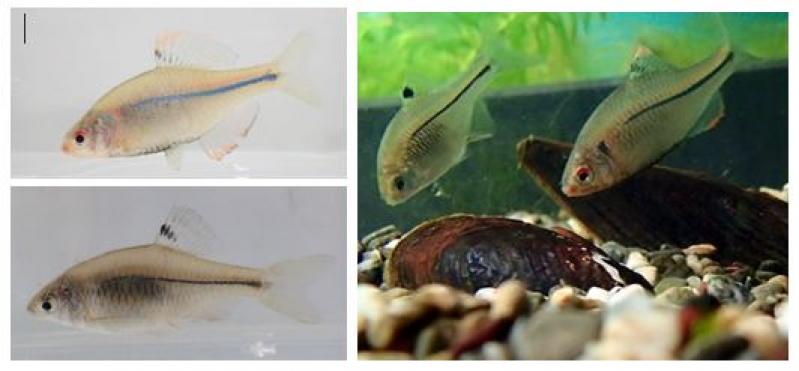既存の薬剤が、移植の過程でドナーの肝臓を損傷から守り、移植後に起こる合併症を軽減する可能性があることが示唆された。 An existing drug could protect donor livers from damage during the transplantation process and reduce complications that occur afterwards, a study suggests.
2022-12-21 エディンバラ大学
老化防止剤は、肝臓から老廃物を排出する肝臓の胆道を保護することが判明した。胆道が障害されると、移植が失敗し、その4分の1近くが新しい肝臓を必要とすることになる。
肝臓移植は現在、末期肝疾患の患者さんにとって唯一の治癒的な選択肢となっています。ヨーロッパでは年間6,000人以上が肝移植を受けており、そのうち600人が英国で受けています。
従来、肝臓は移植前に摂氏4度の低温倉庫に保管されていました。
これまでの研究で、ドナーから肝臓を取り出してからレシピエントに移植するまでの間に、胆道が劣化することが分かっていますが、その理由は解明されていません。
エジンバラ大学の研究者は、移植前の肝臓保存の生物学的効果を調べるために、肝臓の調達、冷蔵保存、輸送を模倣したマウスモデルを使用しました。
研究チームは、臓器保存中に、胆道の機能を維持する胆管細胞と呼ばれる肝細胞が、老化(細胞の成長を停止させる不可逆的な睡眠状態)の影響を最も受けやすいことを見いだした。 老化は低温保存によってさらに進行し、移植後のこの種の細胞の再生が少なくなってしまうのだ。
科学者たちが肝臓を摘出する処置の前に、老化を阻止する薬剤をマウスに投与したところ、胆道が耐えられたのです。また、移植に適さない人間の肝臓で実験したところ、胆道の構造は維持された。
専門家によると、この薬物療法は、胆道障害による移植失敗のリスクを減らす可能性を示唆しているとのことだ。しかし、この薬剤の安全性と有効性については、ヒトでの臨床試験が必要であると注意を促している。
また、研究チームは、低温保存中に細胞死を起こしやすいにもかかわらず、代謝、解毒、タンパク質生産に関わる主要な肝細胞である肝細胞は、老化の影響を受けにくいため再生が可能であることも発見している。
<関連情報>
- https://www.ed.ac.uk/news/2022/drug-discovery-may-boost-liver-transplant-success
- https://www.science.org/doi/10.1126/scitranslmed.abj4375
低温保存中に細胞の老化により失われた胆道再生能力を、セノリティック処理により保存することができる Senolytic treatment preserves biliary regenerative capacity lost through cellular senescence during cold storage
Sofia Ferreira-Gonzalez,Tak Yung Man,Hannah Esser,Rhona Aird,Alastair M. Kilpatrick,Daniel Rodrigo-Torres,Nicholas Younger,Lara Campana,Victoria L. Gadd,Benjamin Dwyer,Niya Aleksieva ,Luke Boulter,Mark T. Macmillan ,Yinmiao Wang,Katie J. Mylonas,David A. Ferenbach ,Timothy J. Kendall,Wei-Yu Lu,Juan Carlos Acosta,Dominic Kurian,Stephen O’Neill,Gabriel C. Oniscu ,Jesus M. Banales,Paul J. Krimpenfort,Stuart J. Forbes
Science Translational Medicine Published:7 Dec 2022
DOI: 10.1126/scitranslmed.abj4375

Abstract
Liver transplantation is the only curative option for patients with end-stage liver disease. Despite improvements in surgical techniques, nonanastomotic strictures (characterized by the progressive loss of biliary tract architecture) continue to occur after liver transplantation, negatively affecting liver function and frequently leading to graft loss and retransplantation. To study the biological effects of organ preservation before liver transplantation, we generated murine models that recapitulate liver procurement and static cold storage. In these models, we explored the response of cholangiocytes and hepatocytes to cold storage, focusing on responses that affect liver regeneration, including DNA damage, apoptosis, and cellular senescence. We show that biliary senescence was induced during organ retrieval and exacerbated during static cold storage, resulting in impaired biliary regeneration. We identified decoy receptor 2 (DCR2)–dependent responses in cholangiocytes and hepatocytes, which differentially affected the outcome of those populations during cold storage. Moreover, CRISPR-mediated DCR2 knockdown in vitro increased cholangiocyte proliferation and decreased cellular senescence but had the opposite effect in hepatocytes. Using the p21KO model to inhibit senescence onset, we showed that biliary tract architecture was better preserved during cold storage. Similar results were achieved by administering senolytic ABT737 to mice before procurement. Last, we perfused senolytics into discarded human donor livers and showed that biliary architecture and regenerative capacities were better preserved. Our results indicate that cholangiocytes are susceptible to senescence and identify the use of senolytics and the combination of senotherapies and machine-perfusion preservation to prevent this phenotype and reduce the incidence of biliary injury after transplantation.
Preserving pretransplantation livers
Cold storage of human livers prior to transplantation can impede organ function and subsequent graft survival. Ferreira-Gonzalez et al. now suggest an approach to prevent pre-transplant ex vivo liver degradation. They found that cellular senescence helps drive biliary injury during cold storage, with differential responses among cholangiocytes and hepatocytes. Administration of a senolytic to mouse and human donor livers before cold storage resulted in improved tissue architecture. It remains to be seen if senolytic treatment improves liver engraftment and function.—CAC


